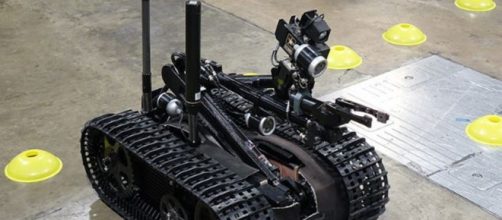The future of warfare is something we have partly seen in movies with robot action in warfare. Now, if the US Defense Department gets their way, it looks like humans and robots will be joining forces in the battlefield. As the Defense Department ponders on bringing in AI technology to deploy armed robots, many civilians raised concerns about this.
Amidst the growing concerns, the US Army squashed speculations that armed robots could become killing machines on the battlefield. BBC News revealed that once deployed, it will still be humans who will have control over the armed robots.
The Department of Defense clarified that armed robots will still be subjected to rules and humans can still reject their actions.
Help humans engage targets
The purpose of upgrading the Advanced Targeting and Lethally Automated System or Atlas is to help human gunners improve their aim. With the help of the technology, humans on the battlefield will be able to acquire, identify, and engage targets by at least three times faster than the current manual process.
It was feared that these systems could select their own targets and decide by themselves to fire. However, the US Army reiterated that humans will have a key role in the aiming process. It clarified that they are still committed to directive 3000.09, requiring a human finger on every trigger.
In its news site "Defense One," the US Army said that it had no plans of allowing robots to be in the position of killing anyone.
According to Prof. Michael Horowitz, a political scientist based at the University of Pennsylvania and a senior adjunct fellow at the Center for New American Security, any plans to revise the Atlas program should clarify the level of autonomy and human involvement when using force.
Growing concern
Apparently, the plan to use such advanced aiming systems is not just an American concern but a global one. According to a report in Time Magazine, around 80 military artificial intelligence officers from about 80 governments met in the UN offices in Geneva to discuss autonomous weapons systems.
Most of the officials feared that the world is on the brink of a “third revolution in warfare” spearheaded by killer robots, the type that could decide who can be targeted without human intervention.
In April 2013, the International Campaign to Stop Killer Robots was launched by several directors of NGOs. Signed by a Nobel Peace Laureate, the movement called for a preemptive ban of lethal robot weapons. The convenors of the movement feared that within the next couple of decades, these machines could have the power to decide who lives or dies on the battlefield.
The reality is that no one wants to see intelligent machines being deployed in battle without human interaction. Unfortunately, it is a reality that we can no longer ignore.


